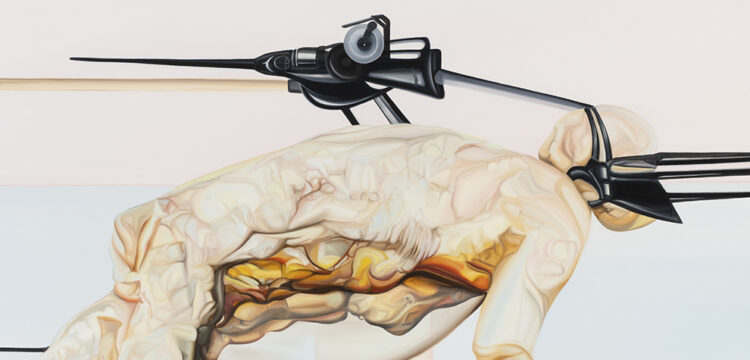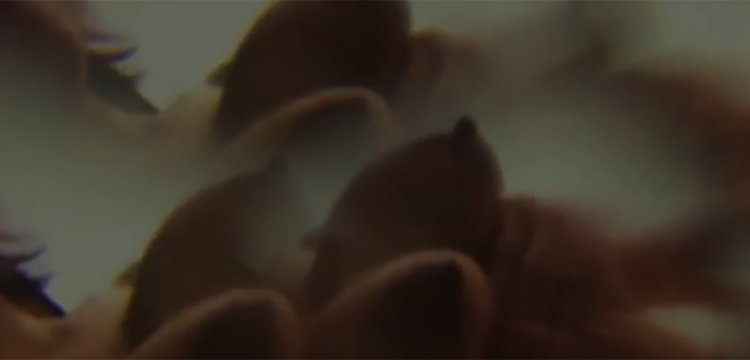A Divagation
A text inspired by Clemente Ciarrocca’s exhibition “The Joys”
The archetype of the scapegoat has held cultural significance across eras and contexts. In the biblical account, a pair of goats is chosen to absorb communal sins. To displace collective guilt, one is driven into the wilderness; the other is slaughtered. Its blood is offered in hope of purification. One disappears, the other is killed—both are sacrificed to restore moral order. Despite the symbol’s power, the goats themselves remain powerless before their ordained misfortune. Their fate is sealed by the role they are obliged to play.
A slaughtered sheep appears on screen in Ingmar Bergman’s Persona (1966), followed by a woman’s face which is caressed by a young boy. His hand touches the screen’s flat surface—the face is only a projection. An intimacy unfolds, and a violation: the face cannot answer the gesture. The static materials of cinema—carbon arc lamps, sprockets, and leader tape—are animated by illusion, turning the spectator into both voyeur and perpetrator.
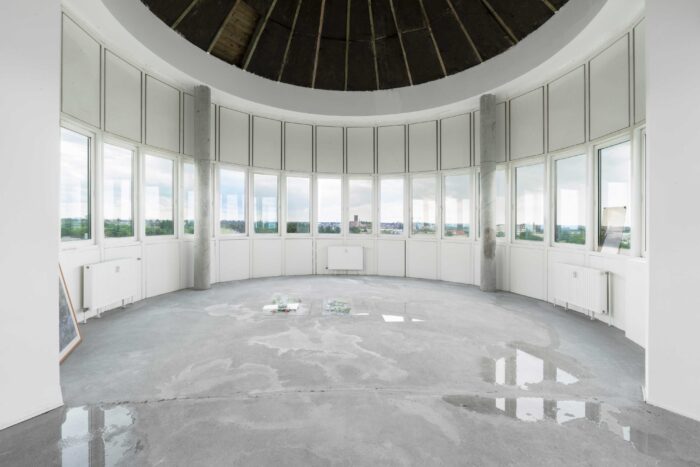
In Persona, violence appears subtle, physically imperceptible, even intimate. The two central figures—the nurse Alma and the patient Elisabet—a successful actress fallen silent—weaponise gaze and speech to project guilt and feed on each other’s vulnerability. Each uses the other’s image as a scapegoat in an attempt to reconcile the self. Yet, the more they attack the closer they draw, until they almost merge. In one scene, their faces are lit as one, captured in close-ups so tight they dissolve the frame. Elisabet answers Alma’s perverse confessions with a predatory gaze and a refusal to speak that resounds like the harshest of judgements. Her silence stems from witnessing horrific images on a screen that expose the spectacle of mediated life and the helplessness of words. As Alma keeps confessing, she becomes a spectacle to Elisabet, who listens while growing numb. A former spectacle herself, Elisabet probes how images are flattened into consumable formats. Beyond the obvious domains, violence resides in the act of looking. The obscenity of dissemination lies in the public sphere’s channeling and overexposure of the private, rendering it available for the masses to look at. The private, however, is the realm in which love can exist, as Jean-François Lyotard condenses in a cryptic sentence:
“Who knows not how to hide knows not how to love.”
Lyotard’s sentence appears on the wall of Clemente Ciarrocca’s exhibition The Joys, where intimacy exists beyond the familiar boundaries of “private” and “public”—codes under which intimacy is constructed and perceived. Ciarrocca seems to ask whether love is possible in the public realm, replying to Lyotard with a question that sets the premise of his exhibition.
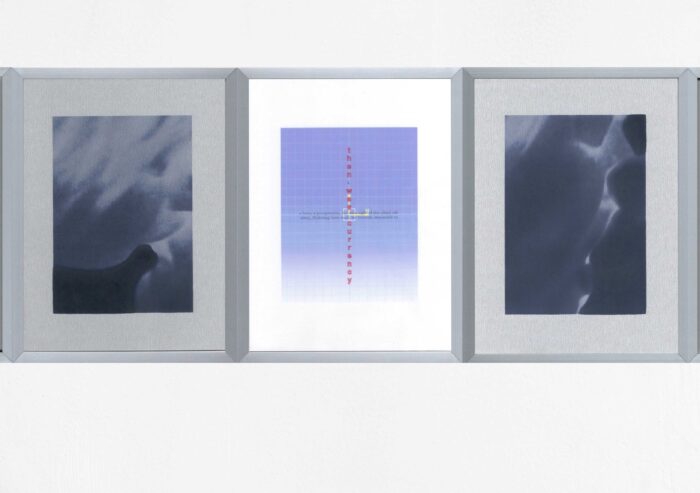
One of the show’s core works is A History of Reason as seen within its Points of Origin (2025): a row of framed images in an interwoven arrangement, alternating negative photographic close-ups of a kiss with images of a purple gridded ground. The colour recalls the sky at dusk; it is also the default hue of a rocketry design software’s wireframe. Two intersecting texts—one vertical, one horizontal—are printed over the grid. The horizontal lines, excerpted from Hélène Cixous’s Tomb(e) (1970), frame a poetic reflection adjusted to The Joys’ demands. Some words, however, are changed—“blouse” for “mouth”, for example—affecting the overall meaning. Red vertical letters intersect the horizontal text, not only visually but in spirit. Each states the oblique phrase “This was that.” Emotion is written, and thus narrativised. The joy of words and narrative, achieved by different means, manifests here through this set of entwined texts and images. Poetry generated with a tool devoted to warfare, combined with registers of emotional proximity, suggest a quantification of the intimate—a paradoxical reflection on the possibility of hijacking existing structures and, in doing so, redirecting their meaning toward affect:
“On the white veils of the mouth danced the thousands
intersected vertical text: ‘There was success‘
of shaded signs drawn with a needle, colored, precise,”
*
A negative image of a kiss
*
“pressed in echoes and mends, I do not want to
intersected vertical text: ‘There was touch’
end shimmering and tearing my texture with its glare”
*
A negative image of a kiss
*
“you know, so dazzling that their minute syntax cannot manage
intersected vertical text: ‘There was delicate’
to shine through the eye. This gave me a joy like a fever,”
*
A negative image of a kiss
*
And so it continues…
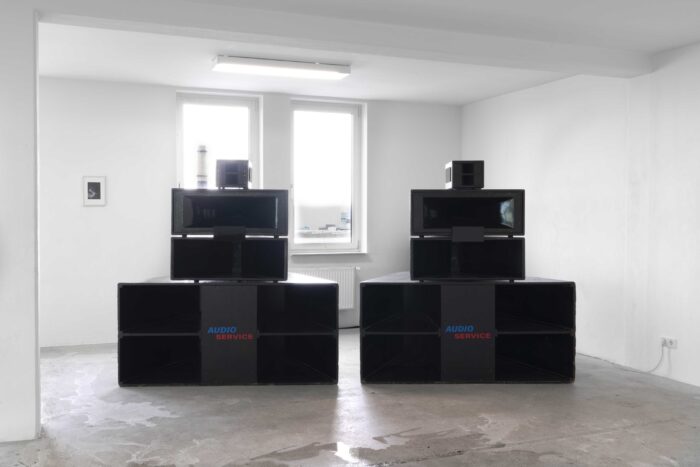
Both image and text probe the potential of the mouth to serve as a portal of access and as locus of control for sounds and fluids. Through moments of intimacy, notions of property, access and control in the realm of the narrative become manifest in the public space. Like the mouth, the gallery gate is a point of exchange and transit. It marks both entrance and exit, and allows for the exchange and movement of visitors who enter not only the room and the works within it, but also a virtual extension of the artist’s mindmap. The exhibition emerges as a protuberance, a tumour, a prosthesis, an armour, and more extending the artist’s inner world into a physical form that can be accessed by other people.
The Joys has a physical presence with a distinctly embodied quality: puddles of transparent liquid spread across the concrete floor. A composition of water, sodium ions, chloride ions, potassium ions, milk, urea, ammonia, calcium ions, magnesium ions, and various amino acids is placed artificially, simulating the human body’s response to heat, embarrassment or nervousness—in other words, sweat. Physical exertion may trigger sweat, but so can fear or excitement. If the floor of Aktionhaus could feel in the same way a human body feels—if it could fear—what might it be afraid of—or thrilled by? A penetration? A judgement? A sacrifice?
In the universe of The Joys, the gallery exists as a site of virtual projection—a space for judgement and rites of passage, where dissolved ideas are presented in the “semiotic marketplace” the gallery becomes. Rosalind Krauss used this term to describe the turn that Cubism represented: painting stopped mimicking material reality and began projecting the psychological universe inside the artist’s head, which could be made public only through the work of art.
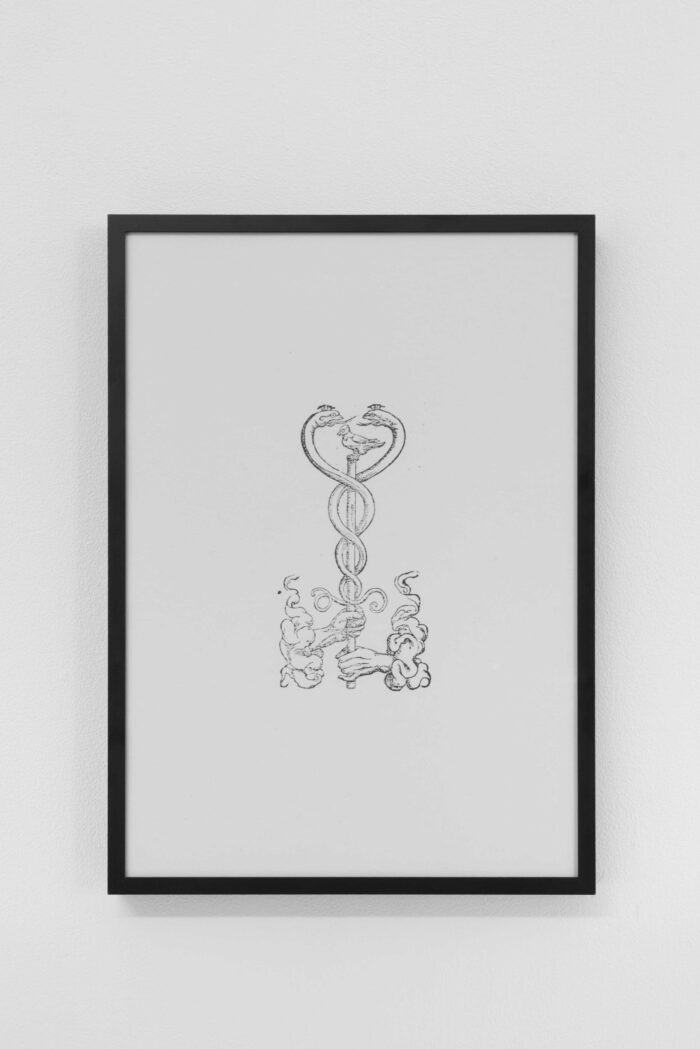
A History of Reason as seen within its Points of Origin (2025) appears as a reorganisation of fragments—interspersed images and texts—an extension of the artist’s private world. The private is made public in slow motion. Slow motion, as Ryan Bishop and John Phillips argue, is the only way the truth of speed can be grasped: elements in motion must be slowed and turned into images to be understood. In this slowed sequence of speech and slides, Ciarocca projects his questions about love, intimacy, and the power of “concealment as a generative force underlying the non-plus-ultra of relations.” But how to conceal—and how to love—when making oneself public in open space, to be observed and scapegoated?
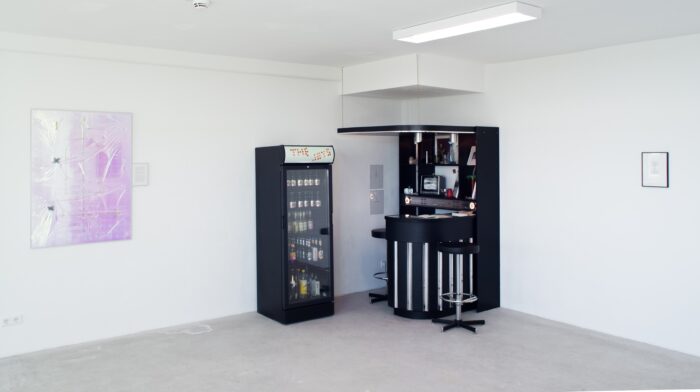
The scapegoat has carried cultural weight across eras and contexts. In The Joys, the exhibition space assumes the roles of the two selected goats symbolically absorbing communal sins. One dimension is cast into the wilderness; the other is slaughtered, its blood offered in hope of purification. One is sent away, the other judged—both sacrificed to restore moral order. Despite the symbol’s power, the artist remains powerless before this ordained misfortune. Their fate is sealed by the very role they are obliged to play.


